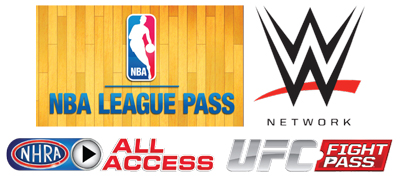Are you still thinking traditionally about exploiting your video rights? Widespread availability of broadband and consumer embrace of video streaming (e.g., Netflix) have created new opportunities for sports media properties. A potential direct fan relationship via a full-time branded video presence with unlimited shelf space makes it essential for all sports entities to reconsider the allocation of programming assets between existing and new/evolving platforms.
For decades, a sport’s status was defined by the quality of its TV arrangements. Deal-making revolved around selecting the best network partners and justifying maximum rights fees based on audience and advertiser demand. After that, you’d work together on scheduling, promotion and operations, but essentially, you put on the events, and the network produces, sells and distributes video programming.
The game has changed, requiring a sports organization to strategically balance rights use alternatives, including thoughtfully addressing streaming. It offers potential revenue upside and enhanced fan engagement but requires resources for promoting, producing and distributing content. While streaming is unlikely to replace the revenue and audience sizes of traditional TV and cable networks for your major events (and could affect rights fees), the opportunity set has probably changed since your last rights negotiation.
 |
Multiple sports properties customize streaming products to deliver programming.
|
Consider the following:
■
OBJECTIVES
What are your greatest needs — better serving your existing fans (through new programming or better scheduling), growing audiences, or just generating more revenue? Do you want to diversify from traditional TV distribution, or are you looking to have a branded video presence online for promotional purposes? Are you prepared to take risk and add operational complexity, but retain more control? Or do you prefer to have your TV partner continue to handle all things video?
■ PROGRAMMING
Maximizing revenue requires considering alternative ways to “slice and dice” content and tailor it to different markets. Historically, live events have been televised full-length, while short-form materials, highlights and historical footage leftovers have been offered to other platforms. Just like leagues often put the biggest games on national networks, put the regular season on cable and offer hard-core fans premium packages like NBA League Pass, you can use streaming to complement your other offerings. Our firm just helped the National Hot Rod Association launch NHRA All-Access, a premium service with live coverage of each national pro and amateur race, that supplements the highly produced, curated, time-condensed content on Fox. You can deliver post-event news conferences, early event rounds or practices, library programming from your content factory (SportsBusiness Journal, March 9-15, 2015), international events and replays (like the UFC’s Fight Pass), special cameras (like NASCAR’s in-car package) or a branded 24/7 stream (like WWE Network). Streaming is also an international medium that can address distant underserved fans. You must figure out how best to divide the rights to create pockets of value, based on the nature of your product, before negotiating with your TV partner, as it will naturally be looking for all the content and exclusivity possible.
■ SALES/MARKETING
Hard-core fans are probably already attuned to your existing promotional channels so they are easy to reach and fairly insensitive to aggressive prices. You can add the new video package to memberships or integrate with existing products to increase revenue and usage. You can sell on a monthly basis, seasonal subscription or per day/per event, and/or create different levels of service. Each has advantages (e.g., recurring sales) and disadvantages (e.g., churn). Alternatively, to build up larger audiences for your regularly televised shows, you can provide the new feeds in multiple locations (Facebook, YouTube, your website) without charge, and encourage your fans to promote them via social media. Either way, you now have a new platform for sponsor activation.
■ PRODUCTION
TV-quality video production costs can be substantial, so look to access and modify existing operations. Use a scoreboard or in-venue feed, or create a “back-bench split” (customized version of the truck program feed, created via a sub-switcher in the rear of the primary TV truck) adapting your primary network feed. Consider unique enhancements, like multi-camera feeds, stats, replays, graphics, 4K, etc. If you must produce original content, there are now shippable “truck-in-a-box” solutions like TriCaster that permit near TV-quality production with less personnel and much lower equipment costs. Backhaul transmission can be done via broadband, fiber or piggybacked on excess capacity from an uplink truck.
■ TECHNOLOGY
In TV, once the network’s production crew is in place or a signal is delivered to network master control, a sports organization’s work is done. In streaming, it is necessary to create end-to-end services. You must determine who will:
■ Do the signal acquisition and ingest, encoding, ad insertion and content delivery to end users.
■ Provide the front-end storefront development, credit card processing and conditional access/encryption and publishing system.
■ Build the iPhone and Android apps, which affect the end-user experience and/or facilitate integration with user hardware like Roku, PlayStation or Xbox.
■ Furnish customer service/tech support services and usage/revenue analytics functionality.
There are full-service companies like MLBAM and NeuLion, as well as vendors that can supply a portion of the solution like iStream Planet. Alternatively, you can consider creating your new product with your network partner, since it already has streaming operations.
■ MODELING
Bringing together all these pieces requires building a robust business model. You must estimate production and delivery costs, hours of programming, ranges of users, average viewing time, maximum usage, bit rates (based on types of connections and viewing devices), development costs for each platform, library storage volume, marketing and sales expenses, buy rates and timing, pricing/packaging, credit card costs, churn, and many other details. Also consider how these estimates will evolve in future years as broadband penetration/speed grows, mobile networks expand, subscriber bases develop and prices change.
■ STAFFING
This is not a project the typical director of broadcasting generalist can handle independently. Be prepared to lean on IT, web operations, marketing, finance and TV production personnel. You may also wish to hire someone who has experience in this space to coordinate efforts.
Naturally, each of the above has many related details to consider. But, by the time your next TV negotiation rolls around, you should have examined these issues, reallocated your assets and determined the ideal direction to chart your property’s media future.
Ed Desser is president of Desser Sports Media, Inc. (www.desser.tv), specializing in sports media rights negotiations, strategic planning, rights and asset valuations, M&A and expert witness services.





